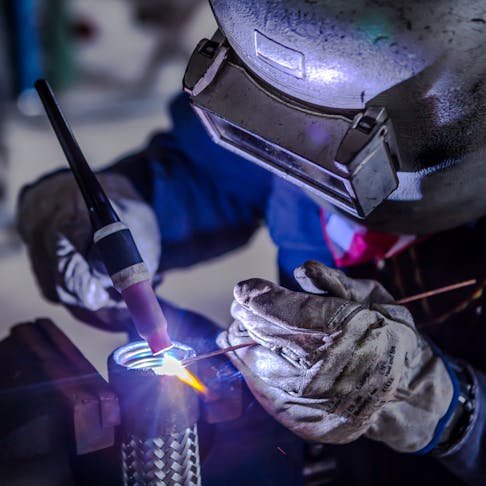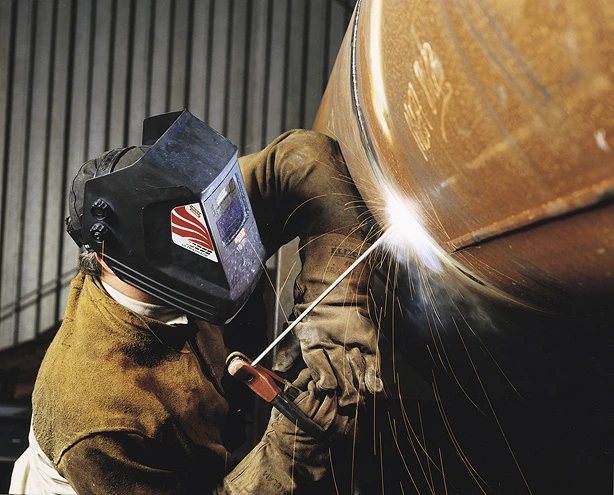The Ultimate Overview to Welding WPS Procedures: A Detailed Review for Welders
In the intricate globe of welding, Welding Treatment Requirements (WPS) function as the backbone of making certain quality, uniformity, and safety in welding procedures. Recognizing the subtleties of developing, implementing, and keeping an eye on WPS procedures is important for welders looking to raise their craft and fulfill industry requirements. As we explore the numerous parts of a WPS and discover the details of qualification and certification, we will discover the crucial function these treatments play in the world of welding. Allow's start a journey to unravel the complexities and importance of WPS procedures in welding practices.
Significance of WPS Procedures
Recognizing the relevance of Welding Procedure Specifications (WPS) treatments is critical for making certain the top quality and stability of welded frameworks. WPS procedures act as a roadmap for welders, laying out the essential actions, specifications, and materials called for to accomplish an audio weld. By sticking to WPS standards, welders can ensure uniformity in their work, resulting in dependable and structurally audio welds.
One of the key reasons why WPS procedures are vital is their duty in maintaining weld high quality and honesty. Adhering to the defined welding criteria and techniques detailed in the WPS aids prevent problems such as porosity, fracturing, or incomplete fusion, which can endanger the toughness and toughness of the weld.

Parts of a WPS
A Welding Procedure Specification (WPS) generally comprises crucial parts that detail the specific needs for carrying out a weld, ensuring uniformity and high quality in the welding process. The vital elements of a WPS consist of essential variables such as base steels, filler metals, preheat and interpass temperature levels, welding processes, shielding gases, welding settings, and post-weld heat therapy requirements.
Base steels refer to the materials being signed up with, while filler metals are used to load the gap in between the base metals throughout welding. Preheat and interpass temperatures are essential for managing the heat input and protecting against concerns like breaking or distortion. The welding procedure lays out the details technique to be used, whether it's gas steel arc welding (GMAW), secured metal arc welding (SMAW), or an additional approach. Protecting gases safeguard the weld swimming pool from atmospheric contamination. Welding positions define the alignments in which welding can be carried out. Post-weld warmth treatment may be essential to ease stresses and enhance the weld's properties. A complete understanding of these components is critical for producing a efficient and thorough WPS.

Certification and Accreditation
Having actually developed the crucial components of a Welding Treatment Specification (WPS), the focus now shifts towards the important elements of certification and qualification in welding techniques.

Certification, on the other hand, is the official recognition of a welder's certifications by a relevant accreditation body or company. Welding certifications are commonly based on the particular welding processes, products, and positions a welder is qualified to collaborate with. Holding a legitimate welding certification shows that a welder meets market criteria and is competent to do welding jobs to the required specs.
Developing a WPS
To create a Welding Procedure Requirements (WPS) that fulfills sector criteria, careful consideration of welding processes, materials, and operational parameters is vital. The very first action in producing a WPS is to determine the welding procedure to be utilized, such as gas metal arc welding (GMAW) or protected metal arc welding (SMAW)

Executing and Checking WPS
Upon completing the thorough Welding Treatment Requirements (WPS) that meticulously details welding processes, materials, operational parameters, and quality control steps, the focus changes to effectively implementing and monitoring the established procedures. Implementation entails ensuring that all welders involved in the task know with the WPS and follow it diligently throughout the welding process. This calls for giving ample training and guidance to ensure adherence to the specified procedures. Monitoring the WPS involves continual oversight to validate that welding activities align with the documented requirements. Assessments, testing, and quality control measures are crucial parts of the surveillance process to identify any kind of variances or problems immediately. Routine audits and reviews of the welding treatments help in keeping uniformity and quality throughout the job. Efficient implementation and surveillance of the WPS are important for guaranteeing the honesty, stamina, and safety of the bonded joints, ultimately adding to the total success of the welding project.
Conclusion
To conclude, understanding and following Welding Procedure Specs (WPS) is crucial for welders to guarantee high quality, uniformity, and safety in their work. By understanding the elements of a WPS, getting proper qualifications and qualifications, creating site link in-depth treatments, and implementing and monitoring them efficiently, welders can improve their abilities and effectiveness in welding techniques. Complying with WPS treatments is essential for creating high-grade welds and conference sector criteria.
In the intricate world of welding, Welding Procedure Specifications (WPS) serve as the backbone of ensuring quality, consistency, and safety and security in welding procedures. The welding process describes the details strategy to be made use of, whether it's gas steel arc welding (GMAW), secured steel review arc welding (SMAW), or an additional technique.To establish a Welding Treatment Requirements (WPS) that satisfies sector criteria, mindful factor to consider of welding procedures, products, and functional criteria is vital. The initial action in developing a WPS is to determine the welding procedure to be used, such as gas metal arc welding (GMAW) or secured steel arc welding (SMAW)Upon settling the extensive Welding Procedure Specification (WPS) that meticulously information welding procedures, materials, operational criteria, and high quality assurance measures, the emphasis moves to efficiently implementing and monitoring the well established treatments.